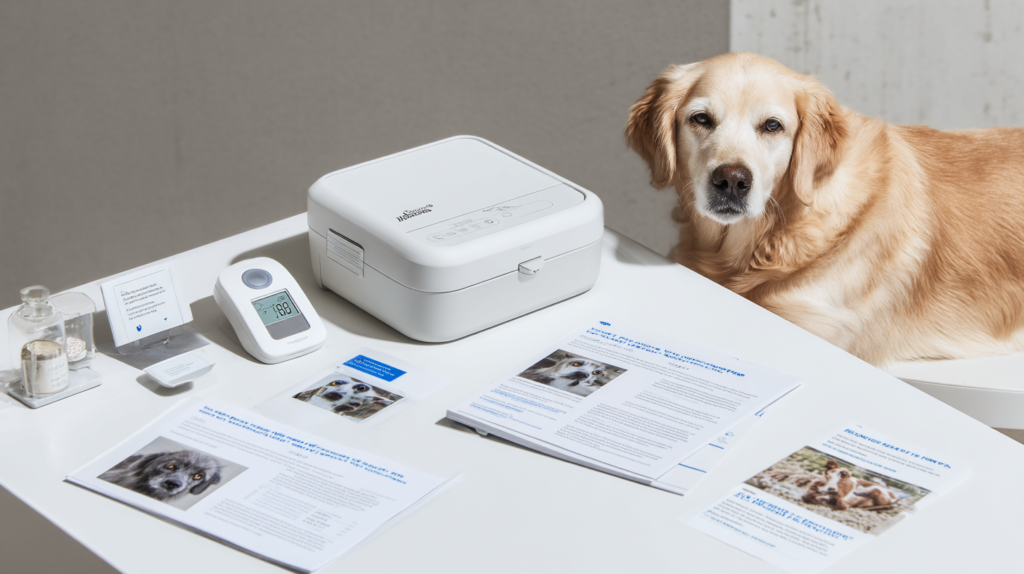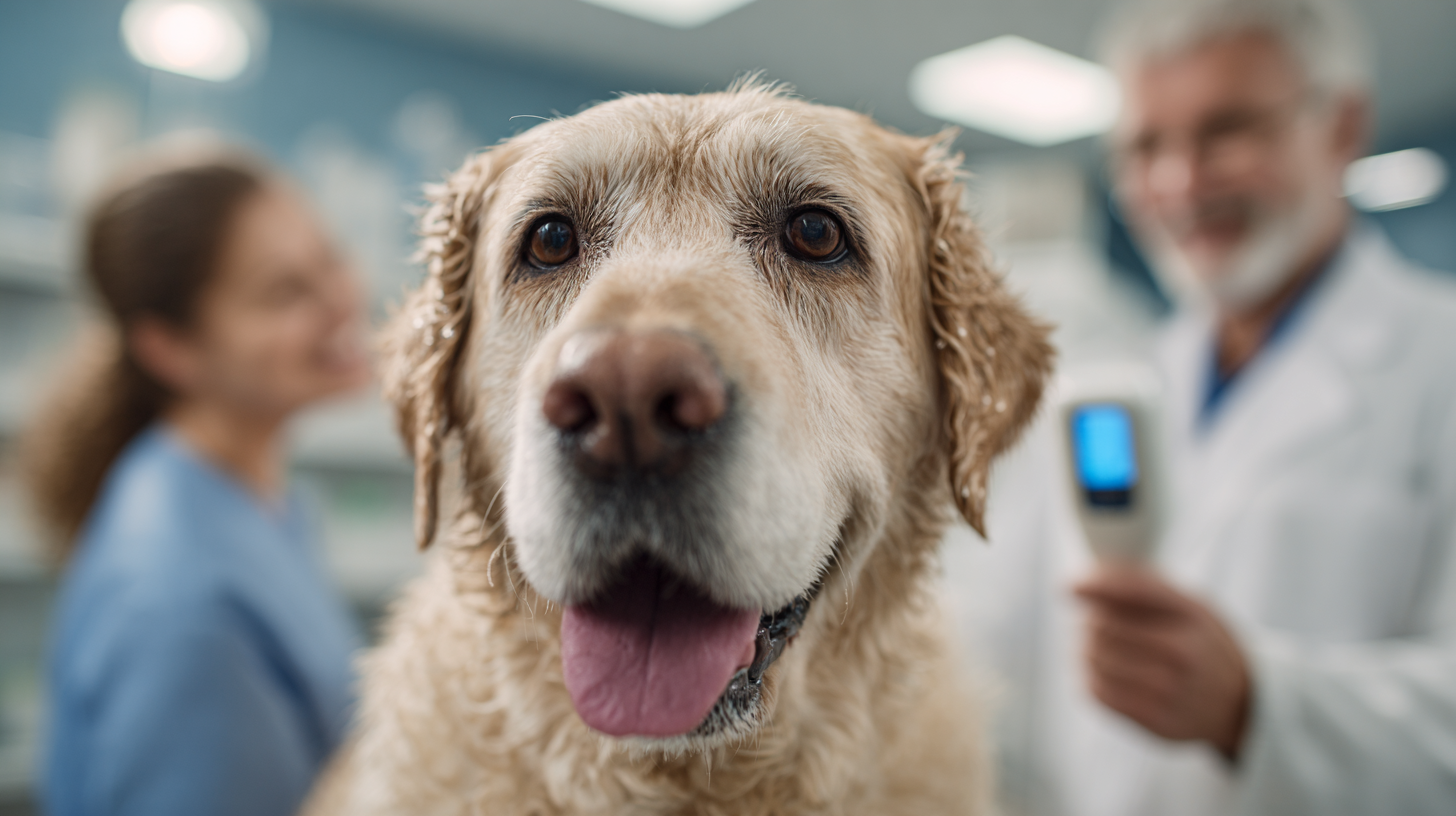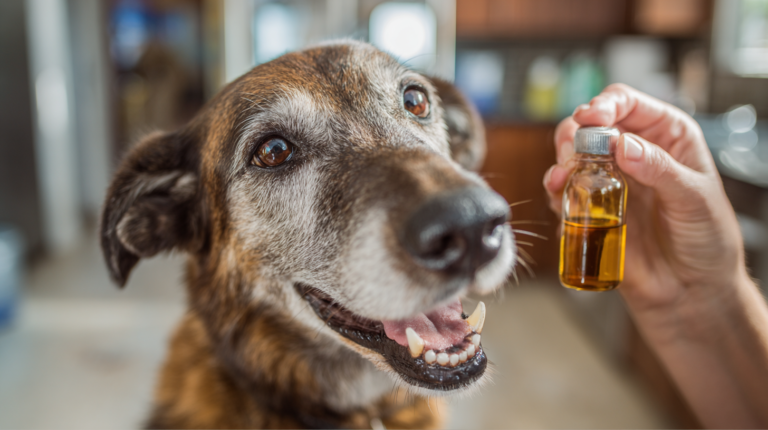Home Again Pet Recovery offers microchip pet tracking and lost pet services. Discover 3 key benefits and 2 important limitations before choosing this pet recovery system.
Table of Contents
Every 2 seconds, a pet goes missing in the United States. That’s over 10 million pets annually, with only 23% of lost dogs and a mere 2% of lost cats ever reuniting with their families. When your beloved companion vanishes, every moment counts, and having a reliable pet recovery system can mean the difference between a happy reunion and heartbreak.
Home Again Pet Recovery has emerged as one of the leading microchip pet tracking solutions, offering comprehensive lost pet services to millions of pet owners across the United States and Europe. This innovative pet recovery system combines advanced microchip technology with 24/7 support services, promising to bring your furry family member home safely. But like any service, it comes with both advantages and limitations that every pet owner should understand before making this critical decision.
In this comprehensive guide, we’ll explore the three major benefits and two significant drawbacks of Home Again Pet Recovery, helping you make an informed choice about protecting your pet. Whether you’re a first-time pet owner or experienced in pet care, understanding these pros and cons will ensure you select the best protection for your four-legged friend.
How Home Again Pet Recovery Works

Home Again Pet Recovery operates through a sophisticated network combining microchip technology, database management, and emergency response services. When you register your pet with Home Again, they receive a tiny microchip implanted under their skin, typically between the shoulder blades. This microchip contains a unique identification number linked to your contact information in Home Again’s extensive database.
The system activates when your pet goes missing. Animal shelters, veterinary clinics, and rescue organizations across the country use universal scanners to check for microchips in found animals. When they scan your pet’s chip, the unique ID appears, and they contact Home Again’s 24/7 call center. The trained staff then immediately reaches out to you with your pet’s location and coordinates the reunion.
What sets Home Again apart from basic microchipping is their comprehensive support network. Beyond the microchip itself, they provide lost pet alerts, emergency medical coverage, and even travel assistance for pets found far from home. This multi-layered approach addresses the various scenarios that can occur when a pet goes missing.
The 3 Major Pros of Home Again Pet Recovery
1. Comprehensive 24/7 Emergency Support Network
Home Again’s most significant advantage lies in their round-the-clock emergency support system. Unlike basic microchip registries that simply store your information, Home Again provides active assistance when your pet goes missing. Their call center operates 365 days a year, staffed by trained professionals who understand the urgency of pet recovery situations.
When a scanner reads your pet’s chip, Home Again doesn’t just provide your contact information—they actively facilitate the reunion process. If you’re unreachable, they’ll continue attempting contact through multiple phone numbers and email addresses. They also coordinate with the finding organization to ensure your pet receives proper care while waiting for pickup.
The service extends beyond basic recovery. Home Again provides emergency medical coverage up to $3,000 annually for pets found injured, removing financial barriers that might prevent immediate veterinary care. They also offer travel assistance if your pet is found more than 500 miles from home, including transportation coordination and temporary boarding arrangements.
Real-world example: Sarah from Denver discovered Home Again’s value when her Golden Retriever, Max, escaped during a camping trip in Colorado. Max was found 200 miles away by a rural veterinary clinic three days later. Home Again’s emergency team not only notified Sarah immediately but also covered Max’s emergency treatment for dehydration and arranged transportation back to Denver, saving Sarah over $1,200 in unexpected expenses.
2. Advanced Microchip Technology and Database Management
Home Again utilizes ISO-compliant microchips that work with all universal scanners, ensuring maximum compatibility across different veterinary clinics and shelters. These chips are designed to last your pet’s lifetime without requiring battery replacement or maintenance. The technology is so advanced that it can be read by any standard scanner, regardless of the manufacturer.
The database management system is equally impressive. Home Again maintains one of the largest pet recovery databases in North America, with over 8 million registered pets. Their system allows for comprehensive profile management, including multiple contact numbers, emergency contacts, veterinary information, and special medical needs. Pet owners can update their information online 24/7, ensuring their contact details remain current.
Home Again also provides additional identification options beyond the microchip. They offer customizable pet tags with QR codes that link to your pet’s online profile, allowing Good Samaritans to access your contact information immediately without needing a scanner. This dual-layer identification system significantly increases the chances of a quick reunion.
3. Proactive Lost Pet Alert System
When you report your pet missing, Home Again activates their comprehensive alert system that extends far beyond traditional “lost pet” posters. They send customized alerts to veterinary clinics, animal shelters, and rescue organizations within a 25-mile radius of where your pet went missing. These alerts include your pet’s photo, description, and your contact information.
The system also leverages social media and online platforms to maximize exposure. Home Again creates shareable social media posts with your pet’s information and distributes them across multiple platforms. They also list your pet on popular lost pet websites and coordinate with local pet recovery volunteers who actively search for missing animals.
For premium subscribers, Home Again offers enhanced alert services including automated phone calls to local residents, digital billboard advertising in high-traffic areas, and coordination with local news media for particularly challenging cases. This multi-channel approach dramatically increases the visibility of your missing pet case.
The 2 Notable Cons of Home Again Pet Recovery
1. Ongoing Subscription Costs and Fee Structure
Home Again’s most significant drawback is its complex fee structure and ongoing subscription requirements. Unlike one-time microchip registration services, Home Again charges annual fees ranging from $19.99 to $39.99, depending on your selected service level. These recurring costs can add up significantly over your pet’s lifetime, potentially reaching $400-800 for a pet that lives 15-20 years.
The initial setup also involves multiple costs. The microchip implantation fee ranges from $45-75 at most veterinary clinics, and Home Again charges an additional activation fee of $17.99. Premium features like enhanced lost pet alerts, travel assistance, and higher emergency medical coverage require upgraded subscriptions at higher price points.
For families with multiple pets, these costs multiply quickly. A household with three pets could face annual fees exceeding $120, plus initial setup costs of over $300. While many pet owners consider this a worthwhile investment, the cumulative expense can be prohibitive for budget-conscious families or those with fixed incomes.
Financial transparency is another concern. Some pet owners report unexpected charges for services they believed were included in their basic subscription. It’s crucial to carefully review the terms of service and understand exactly what’s covered at each subscription level to avoid surprises.
2. Technology Limitations and Dependency Issues
Despite advanced microchip technology, Home Again still faces significant limitations that can impact pet recovery success. The most critical limitation is the dependency on scanner availability and operator competence. While most veterinary clinics and shelters have scanners, not all Good Samaritans, animal control officers, or rural facilities have access to this technology.
Scanner compatibility issues occasionally arise, particularly with older equipment or non-standard scanning techniques. Some pets’ microchips may not be detected if the scanner operator doesn’t perform a thorough scan or if the chip has migrated from its original implantation site. Studies indicate that improper scanning techniques result in up to 15% of microchips going undetected during routine scans.
Geographic coverage presents another challenge. While Home Again’s network is extensive in urban areas, rural and remote regions may have limited participating facilities. Pets found in these areas might not receive immediate scanning, delaying the recovery process. Additionally, the 25-mile alert radius may be insufficient for pets that travel long distances or are transported by well-meaning individuals.
The system also relies heavily on people following proper protocols. If someone finds your pet but doesn’t take them to a facility with scanning capabilities, the microchip technology becomes ineffective. This is particularly problematic in rural areas where people might attempt to care for found pets themselves rather than contacting official channels.
Expert Tips for Maximizing Home Again Pet Recovery Success
1. Keep Your Information Updated Religiously
The most critical factor in successful pet recovery is maintaining current contact information. Update your Home Again profile immediately when you move, change phone numbers, or modify emergency contacts. Consider adding multiple contact methods, including work numbers, family members’ phones, and email addresses.
Set quarterly reminders to review and verify your pet’s profile information. Include recent photos, updated weight, and any new medical conditions or medications. The more accurate and comprehensive your pet’s profile, the faster and more effective the recovery process becomes.
2. Combine Multiple Identification Methods
While Home Again’s microchip is excellent, combine it with visible identification for maximum protection. Use a collar with ID tags that include your name, phone number, and “CHIPPED” notation. Consider GPS tracking collars for high-risk pets or those with escape tendencies.
QR code tags are increasingly popular because they allow immediate access to your pet’s information without requiring specialized equipment. Many pet owners use both traditional tags and QR codes to cover all scenarios.
3. Practice Prevention and Preparation
The best recovery system is prevention. Secure your yard with adequate fencing, use leashes in unfenced areas, and consider GPS collars for pets prone to wandering. Create a lost pet action plan before you need it, including contact information for local shelters, veterinary clinics, and Home Again’s emergency line.
Photograph your pet from multiple angles quarterly, including close-ups of unique markings or features. Store these photos in easily accessible locations on your phone and computer. Consider creating a “lost pet kit” with recent photos, copies of vaccination records, and a list of your pet’s favorite places and behaviors.
4. Understand Your Coverage Limitations
Read your Home Again subscription agreement carefully and understand exactly what services are included at your subscription level. Know the geographic coverage area, emergency medical coverage limits, and any exclusions or waiting periods.
Consider whether premium features like enhanced alerts or travel assistance are worth the additional cost based on your pet’s risk profile and your geographic location. Urban pets with secure yards may need less coverage than rural pets with roaming tendencies.
5. Build Local Networks and Relationships
Establish relationships with local veterinary clinics, animal shelters, and pet rescue organizations. Introduce yourself and your pet during routine visits, and ensure they have your current contact information. Many successful pet recoveries happen through local networks rather than formal systems.
Join local social media groups dedicated to lost and found pets. These communities often mobilize quickly when pets go missing and can provide valuable search assistance and emotional support during stressful times.
6. Train Your Pet for Recovery Situations
Teach your pet to respond to their name and come when called, even in stressful situations. Practice recall training in various environments and consider teaching a distinctive whistle or sound that your pet associates with you.
Socialize your pet so they’re comfortable with strangers and new environments. Well-socialized pets are more likely to approach people for help and less likely to remain hidden when lost.
7. Know When to Expand Your Search
If your pet isn’t found within 24 hours, expand your search beyond Home Again’s automatic alerts. Contact local animal control, post on social media, and create physical flyers for high-traffic areas. The first 24-48 hours are critical for pet recovery success.
Consider hiring professional pet trackers or animal behaviorists for pets missing longer than a week. These specialists understand animal behavior and can provide insights into where your pet might go and how to attract them back.
8. Prepare for Different Scenarios
Understand that different types of pets require different recovery approaches. Cats often hide nearby and may not emerge for days, while dogs might travel miles from home. Indoor pets may be particularly disoriented and require different search strategies than outdoor-savvy animals.
Create specific action plans for different scenarios: escape from home, lost while traveling, stolen pet, or pet given away by mistake. Each situation requires different immediate actions and long-term strategies.
Common Mistakes Pet Owners Make
Delaying Microchip Registration
Many pet owners receive microchips from shelters or rescues but never complete the registration process. An unregistered microchip is essentially useless—it’s like having a phone number that doesn’t connect to anyone. Complete your Home Again registration immediately after your pet receives their microchip.
Assuming the Microchip is Enough
Microchips are excellent identification tools, but they’re not tracking devices. They can’t tell you where your pet is—they only identify your pet when found and scanned. Combine microchips with visible identification and consider GPS tracking for high-risk pets.
Forgetting to Update Information
Life changes happen, but many pet owners forget to update their pet’s registration information. An old phone number or address can delay reunion by hours or days. Set annual reminders to review and update your pet’s profile.
Panicking Instead of Acting Systematically
When a pet goes missing, panic is natural, but systematic action is more effective. Follow a structured approach: immediately contact Home Again, search the immediate area, contact local shelters and veterinary clinics, and then expand your search through social media and community networks.
Debunking Common Home Again Pet Recovery Myths
Myth 1: Microchips Can Track My Pet’s Location
Reality: Microchips are identification devices, not GPS trackers. They contain a unique number linked to your contact information but cannot provide real-time location data. For location tracking, you need a separate GPS collar or device.
Myth 2: Once Microchipped, My Pet Can Never Get Lost
Reality: Microchips significantly increase recovery chances but don’t prevent pets from getting lost. They’re only effective when someone finds your pet and takes them to a facility with scanning capabilities. Prevention through proper containment and training remains crucial.
Myth 3: All Microchips Work the Same Way
Reality: While most modern microchips are ISO-compliant and work with universal scanners, older chips or those from different manufacturers may have compatibility issues. Home Again’s chips are designed for maximum compatibility, but success still depends on proper scanning technique and equipment maintenance.
When to Consult Your Veterinarian
Emergency Situations
Contact your veterinarian immediately if your returned pet shows signs of injury, illness, or behavioral changes. Pets who have been missing may have experienced trauma, exposure to diseases, or injuries that aren’t immediately apparent. A thorough examination can identify hidden problems and ensure your pet’s health.
Microchip-Related Concerns
If you suspect your pet’s microchip has migrated, become damaged, or is causing discomfort, schedule a veterinary examination. While complications are rare, they can occur, and early detection prevents more serious issues.
Behavioral Changes After Recovery
Many pets experience stress-related behavioral changes after being lost and found. If your pet shows signs of anxiety, depression, or unusual behaviors lasting more than a few days, consult your veterinarian or a pet behaviorist for guidance.
Preventive Care Planning
Discuss your pet’s escape risk factors with your veterinarian. They can provide personalized advice on containment solutions, anxiety management, and identification strategies based on your pet’s specific needs and behaviors.
The Science Behind Pet Recovery Success
Recent studies by the American Veterinary Medical Association reveal that microchipped pets are 20 times more likely to be returned to their owners than those without identification. However, the success rate varies significantly based on several factors:
Microchip Registration Status: Pets with current, accurate registration information have a 74% return rate, while those with outdated information drop to 43%. Unregistered microchips result in only 18% successful reunions.
Time Factor: Pets found within 24 hours have an 85% reunion rate, dropping to 65% after 48 hours and 35% after one week. This emphasizes the importance of immediate action and comprehensive alert systems like Home Again provides.
Geographic Factors: Urban pets have higher recovery rates (68%) than rural pets (52%), primarily due to better scanner availability and higher population density increasing the likelihood of discovery.
Pet Type Variations: Dogs have significantly higher recovery rates (71%) than cats (34%), largely because dogs are more likely to approach people and be brought to scanning facilities.
Comparing Home Again to Alternative Pet Recovery Systems
Traditional Microchip Registries
Basic microchip registries typically charge one-time fees ranging from $15-45 but offer limited services beyond contact information storage. They don’t provide active recovery assistance, emergency medical coverage, or lost pet alerts. While more affordable initially, they lack the comprehensive support that makes Home Again valuable during crisis situations.
GPS Tracking Collars
GPS collars provide real-time location tracking but require battery maintenance, monthly subscription fees, and consistent wearing. They’re excellent for immediate location identification but useless if removed or damaged. Combining GPS tracking with microchip backup provides comprehensive protection.
Tattoo Identification
Pet tattoos were popular before microchips but have significant limitations. They can fade, become illegible, or be altered. They’re also more difficult to apply and require your pet to be conscious and cooperative for reading. Most veterinary professionals now recommend microchips over tattoos.
Social Media and Community Networks
While social media groups and community networks are valuable supplements to formal recovery systems, they shouldn’t be primary identification methods. They depend on human recognition and voluntary participation, making them unreliable as standalone solutions.
Cost-Benefit Analysis: Is Home Again Worth It?
Financial Considerations
Home Again’s total cost over a pet’s lifetime ranges from $400-800, depending on subscription level and pet longevity. While this seems expensive, consider the alternative costs:
Professional Pet Recovery Services: $500-2,000 per incident Veterinary Care for Injured Found Pets: $200-5,000 depending on injuries Replacement Pet Costs: $500-2,000 for purebred animals Emotional and Time Costs: Immeasurable but significant
Value Proposition
For many pet owners, Home Again’s comprehensive services justify the ongoing costs. The peace of mind, emergency medical coverage, and professional recovery assistance often prove invaluable during actual lost pet situations. However, budget-conscious owners might consider basic microchip registration combined with preventive measures as a more economical alternative.
Risk Assessment
Consider your pet’s individual risk factors when evaluating Home Again’s value:
High-Risk Pets: Escape artists, anxious animals, outdoor cats, or pets in high-traffic areas benefit most from comprehensive coverage Low-Risk Pets: Indoor animals, well-trained pets, or those in secure environments might be adequately protected with basic microchip registration Geographic Factors: Urban pets with good scanner coverage may need less comprehensive services than rural pets
Preparing for the Unexpected: Emergency Action Plan
Immediate Response Checklist
When you discover your pet is missing, follow this systematic approach:
- Search the immediate area thoroughly, calling your pet’s name and checking hiding spots
- Contact Home Again immediately to report your pet missing and activate alert systems
- Notify local animal shelters and veterinary clinics within a 25-mile radius
- Post on social media with clear photos and contact information
- Create and distribute flyers in high-traffic areas where your pet was last seen
- Contact local animal control and pet rescue organizations
- Check with neighbors and ask them to search their properties
- Expand your search radius if your pet isn’t found within 24 hours
Long-Term Recovery Strategies
If your pet remains missing after initial efforts:
- Maintain consistent presence in the area where your pet went missing
- Use scent trails by placing your worn clothing or your pet’s favorite items outside
- Continue social media campaigns with updated information and expanded search areas
- Consider professional help from pet trackers or animal behaviorists
- Never give up hope – pets have been recovered months or even years after going missing
Technology Trends in Pet Recovery
Emerging Technologies
The pet recovery industry continues evolving with new technologies:
Smart Collars: Devices combining GPS tracking, health monitoring, and microchip backup Blockchain Registration: Secure, unchangeable registration systems that prevent fraud AI-Powered Facial Recognition: Technology that can identify pets from photos posted on social media Drone Search Technology: Aerial search capabilities for large area coverage
Future Developments
Home Again and similar services are investing in advanced technologies:
Improved Scanner Technology: Enhanced detection capabilities and mobile scanning apps Integration with Smart Home Systems: Automatic alerts when pets leave designated areas Wearable Health Monitoring: Devices that track vital signs and alert owners to health issues Community Network Expansion: Larger databases and improved volunteer coordination systems
Building a Comprehensive Pet Safety Strategy
Multi-Layer Protection Approach
The most effective pet protection strategies combine multiple elements:
Physical Containment: Secure fencing, leashes, and supervised outdoor time Identification: Microchips, visible tags, and updated registration information Technology: GPS tracking for high-risk pets and security cameras for property monitoring Training: Recall training, socialization, and escape prevention behaviors Community: Relationships with neighbors, local veterinarians, and pet networks
Seasonal Considerations
Different seasons present unique challenges:
Summer: Increased outdoor activity and travel risks, fireworks anxiety Winter: Reduced visibility, harsh weather survival concerns Spring: Mating season behaviors, increased wildlife activity Fall: Hunting season risks, holiday visitor disruptions
Life Stage Adaptations
Adjust your pet protection strategy based on your pet’s life stage:
Puppies/Kittens: Higher escape risk, curiosity-driven exploration Adult Pets: Established behavior patterns, routine-based protection Senior Pets: Reduced mobility, potential cognitive changes affecting navigation Special Needs Pets: Medication requirements, behavioral considerations
The Human Element: Emotional Preparation
Managing Stress and Anxiety
Losing a pet is emotionally devastating. Prepare yourself mentally:
Stay Calm: Panic impairs decision-making and reduces search effectiveness Maintain Hope: Many pets are recovered days, weeks, or months after going missing Seek Support: Connect with other pet owners, online communities, or professional counselors Take Care of Yourself: Maintain your health so you can sustain recovery efforts
Involving Family Members
Assign Responsibilities: Give each family member specific tasks to prevent overlap and ensure comprehensive coverage Maintain Communication: Regular updates prevent family members from duplicating efforts Prepare Children: Explain the situation honestly while maintaining hope and involving them in age-appropriate recovery activities Document Everything: Keep records of search efforts, contacts made, and leads followed
| Feature | Home Again Pet Recovery | Basic Microchip Registry | GPS Tracking Collar | No Identification |
|---|---|---|---|---|
| Initial Cost | $45-75 + $17.99 activation | $15-45 one-time | $50-200 + monthly fees | $0 |
| Ongoing Costs | $19.99-39.99 annually | $0 | $5-20 monthly | $0 |
| Recovery Success Rate | 74% (registered) | 43% (basic service) | 85% (if collar intact) | 2-5% |
| 24/7 Support | ✅ Professional call center | ❌ Contact info only | ❌ App-based only | ❌ None |
| Emergency Medical Coverage | ✅ Up to $3,000 annually | ❌ None | ❌ None | ❌ None |
| Active Search Assistance | ✅ Alerts to facilities | ❌ Passive database | ✅ Real-time tracking | ❌ None |
| Travel Support | ✅ 500+ mile assistance | ❌ None | ✅ Worldwide tracking | ❌ None |
| Battery Requirements | ❌ Lifetime chip | ❌ Lifetime chip | ✅ Daily charging | ❌ None |
| Weather Resistance | ✅ Implanted chip | ✅ Implanted chip | ⚠️ Variable by model | ❌ N/A |
| Removal Risk | ❌ Cannot be removed | ❌ Cannot be removed | ✅ Can be lost/removed | ❌ N/A |
| Scanner Dependency | ✅ Requires scanner | ✅ Requires scanner | ❌ Smartphone app | ❌ N/A |
| Best For | Comprehensive protection | Budget-conscious owners | Real-time tracking needs | Not recommended |
For more expert pet care tips and product recommendations, visit BlithePet your trusted source for pet wellness.
FAQ Section
1. How does Home Again Pet Recovery work?
Home Again Pet Recovery uses a microchip implanted under your pet’s skin that contains a unique ID number. When your pet is found and scanned at a veterinary clinic or shelter, the ID connects to Home Again’s database, and their 24/7 call center contacts you immediately. The service includes emergency medical coverage up to $3,000 annually and travel assistance for pets found over 500 miles from home.
2. What are the main advantages of Home Again over basic microchip registration?
Home Again offers three key advantages: 24/7 professional emergency support (not just contact information), proactive lost pet alerts sent to local facilities and social media, and emergency medical coverage for found pets. Basic registries only store your contact information without active recovery assistance.
3. How much does Home Again Pet Recovery cost annually?
Home Again charges $19.99-$39.99 annually depending on your service level, plus a one-time activation fee of $17.99. The microchip implantation costs $45-75 at most veterinary clinics. Over a pet’s lifetime, total costs typically range from $400-800.
4. Can Home Again track my pet’s real-time location?
No, Home Again microchips are identification devices, not GPS trackers. They cannot provide real-time location tracking. The chip only activates when scanned by someone who finds your pet. For location tracking, you need a separate GPS collar device.
5. What happens if my pet is found injured?
Home Again provides emergency medical coverage up to $3,000 annually for registered pets found injured. This coverage removes financial barriers that might prevent immediate veterinary care. They also coordinate with the finding facility to ensure your pet receives proper treatment while waiting for reunion.
6. Are there any limitations to Home Again’s service?
Yes, two main limitations exist: the service depends on scanner availability and trained operators (rural areas may have limited coverage), and the system relies on people bringing found pets to scanning facilities. Additionally, the ongoing subscription costs can add up significantly over your pet’s lifetime.
7. How successful is Home Again at reuniting pets with owners?
Home Again reports a 74% success rate for pets with current, accurate registration information. This drops to 43% for pets with outdated information and only 18% for unregistered microchips. Success rates are highest when pets are found within 24 hours of going missing.
Conclusion:
Home Again Pet Recovery offers significant advantages for pet owners seeking comprehensive protection against the heartbreak of a lost pet. The 24/7 emergency support, advanced microchip technology, and proactive alert systems provide peace of mind and professional assistance when you need it most. However, the ongoing subscription costs and technology limitations require careful consideration based on your pet’s individual risk factors and your family’s budget.
The three major pros – comprehensive emergency support, advanced technology, and proactive alerts – make Home Again particularly valuable for high-risk pets, frequent travelers, or owners who want maximum protection. The two notable cons – ongoing costs and technology limitations – may make budget-conscious owners consider alternative solutions or basic microchip registration.
Ultimately, the decision should be based on your pet’s specific needs, your geographic location, and your financial situation. Regardless of which system you choose, some form of identification is essential. Whether you select Home Again’s comprehensive services or a basic microchip registry, the important thing is taking action to protect your beloved companion.
Remember that no system is perfect, and the best pet recovery strategy combines multiple elements: proper identification, preventive measures, training, and community awareness. The goal isn’t just to recover your pet if they go missing – it’s to prevent them from getting lost in the first place.
Have a similar experience with your pet recovery system? Share it in the comments below! Don’t forget to check out our other helpful guides at BlithePet.com for more expert advice on keeping your furry family members safe and healthy.







